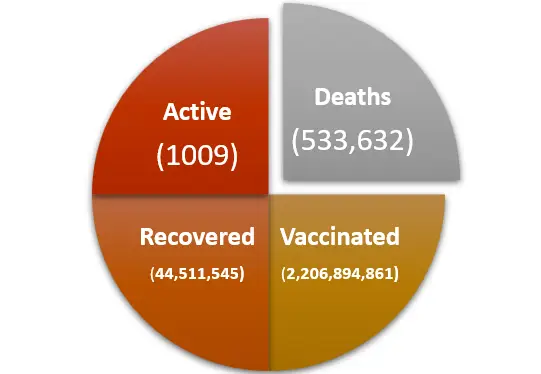As the world adjusts to life after the epidemic, COVID-19 is making news once more. In May 2025, India reported a slight increase in cases due to the appearance of new COVID-19 variants—NB.1.8.1 and LF.7. While these varieties are being monitored, experts believe there is no need to fear. Instead, being aware and adopting the essential safeguards will allow us to properly manage this circumstance.
What are the New COVID-19 Variants in India?
Two new variants, NB.1.8.1 and LF.7, have been detected in the states of Tamil Nadu and Gujarat. The World Health Organization (WHO) has them listed as “Variants Under Monitoring”0, or under close monitoring, but have not yet stated that they are significantly riskier.
Are These New Variants a Threat?
Nowadays, health officials indicate that these emerging COVID-19 variants are not believed to transmit quickly or be highly fatal. Most cases reported are moderate, with none under observation. It is, however, wise to observe how they transmit, particularly in populous settings.
Indications of the New COVID-19 Strains
Currently, new strains don’t appear to make individuals seriously ill, but individuals have frequently complained of some symptoms:
- Low fever
- Dry cough
- Sore throat
- Headache
- Fatigue
- Occasionally, body aches
Most individuals are symptom-free or recover within a few days with home treatment. But if symptoms are actually getting worse, they need to see a physician immediately.
How Rapidly are These Variants Spreading?
The transmission of the new nCOVID-19 variants is gradual and not explosive. Kerala, Maharashtra, Delhi, and Karnataka witnessed a slight increase in fresh cases. Thankfully, no state is witnessing a crisis or clogging hospital admissions.
The public is still advised to remain cautious, especially when in large groups or while traveling.
COVID-19 Case Update: India and Global (May 2025)
India:
Active corona cases in India: ~1,100
Most affected states: Kerala, Tamil Nadu, Gujarat
Severity: Primarily mild
Hospitalizations: Low and constant with 98% recover rate.
These results show a modest rise in active cases, owing to the emergence of novel strains NB.1.8.1 and LF.7. However, health officials note that the issue remains under control, with the majority of cases being minor and managed with home isolation.
State / Union Territory | Active Cases |
Kerala | 430 |
Tamil Nadu | 66 |
Maharashtra | 56 |
Delhi | 100 |
Karnataka | 13–35 |
Puducherry | 10–12 |
Gujarat | 7 |
Andhra Pradesh | 4 |
Uttar Pradesh | 4+ |
Haryana | 9 |
Punjab | 1 |
Rajasthan | 2 |
Sikkim | 1 |
These numbers show that Kerala is currently the most impacted state, accounting for more over one-quarter of all active cases nationally. The vast majority of these instances are mild and are being treated at home. Health officials continue to closely monitor the situation and advise the public to take preventive measures like as mask use, hand hygiene, and social separation.
World Overview:
COVID-19 cases remain stable globally, but some regions are experiencing localized surges due to new variants. Singapore, Thailand, and China are experiencing significant increases in infections due to the rapid spread of JN.1 and its sublineages. These developments underscore the need for vigilance, preparedness, and adherence to preventive health measures.
Nations like the USA, UK, and Japan are already experiencing small surges in COVID-19 cases due to other strains like JN.1.7 and FLiRT.
WHO has not declared a new worldwide emergency but continues monitoring the evolving scenarios across the globe.
Key Global Insights:
-
Singapore reported a dramatic spike in cases, rising from 11,100 to 14,200 in just one week.
-
Thailand experienced a significant surge, with cases increasing from 6,000 to over 33,000 in a matter of days.
-
China is seeing hospitals under strain due to the rapid spread of Omicron subvariants XDV and NB.1.8.1.
These developments emphasize the ongoing importance of surveillance, preparedness, and a strong commitment to preventive health measures, even as the world moves beyond the emergency phase of the pandemic.
Safety Precautions You Need to Observe
Even if not that serious, it is wise to observe simple health precautions to reduce the risk of getting infected or transmitting COVID-19:
Use a face mask in public places
Frequently wash hands with soap or sanitizer.
Practice social distancing in public areas
Refrain from touching your face unnecessarily
Take a booster shot if you are able to.
These habits stop COVID-19 and also shield you from flu that recurs each season and other microbes.
Who Is Most Likely to Be Impacted by These New Strains?
Individuals with compromised immune systems, the elderly, and patients with underlying medical conditions such as diabetes, asthma, or cardiovascular disease must be very cautious. These individuals are more likely to develop complications, even with mild COVID-19.
Do You Need a Booster Shot Now?
If you have not received your COVID-19 booster shot in the recent history 6–12 months, health professionals recommend getting it. For older adults and individuals with underlying health conditions, getting themselves up to date with vaccines can prevent severe illness.
Government Guidelines and Response (to May 2025)
The government in India has not re-imposed lockdowns and curfews. It has, however, proposed:
- Being vigilant in public areas
- Quarantining if you are positive
- Reporting symptoms promptly
- Following local health advice
These are steps taken to prevent panic and protect the populace.
Be Knowledgeable, Not Afraid!
Overall, COVID-19 has returned a bit with new variants in India but we can manage. The majority of the cases are not serious and our healthcare is not put under pressure. But caution, taking personal responsibility, and practicing good hygiene are necessary to protect you and your loved ones.
By choosing facts over fear and prudence, we can live with confidence in this new era of COVID-19 management.




